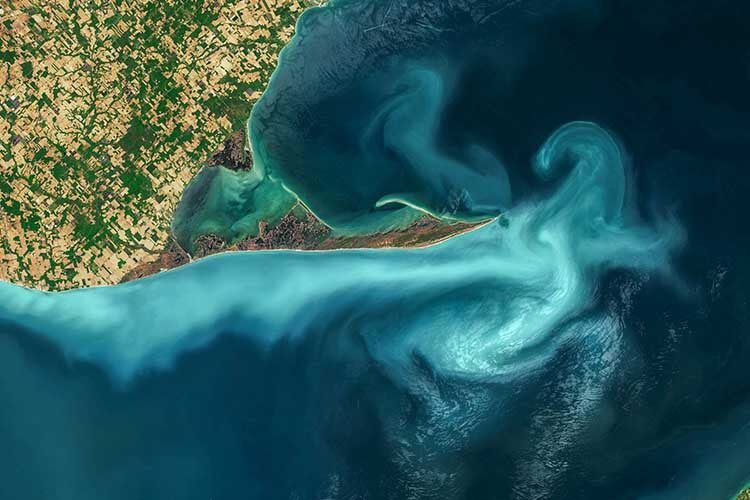
By DIVE Staff
Scientists from the National Oceanography Centre (NOC) have published a study describing how changes in the colour of more than half of the ocean have occurred as a result of changes in the plankton communities.
The new paper ‘Global climate change trends detected in indicators of ocean ecology’ published in the online journal Nature, reports that plankton communities in around half of the world’s oceans have been affected by climate change over the past 20 years.
The oceans are home to huge blooms of plankton, tiny organisms carried by tides and currents which provide a rich source of nutrients for marine life. They are divided into phytoplankton – small plants – and zooplankton, tiny animals.
The scientists behind the study say that the 20-year figure over which they have determined the trend is significant as, prior to this study, the scientific consensus believed that 30 years of satellite data would be needed to detect a climate change trend in the levels of chlorophyll distributed throughout the ocean.
Chlorophyll – the chemical through which plants absorb energy from the sun during photosynthesis – gives plants their green colour, and hence is present in phytoplankton and other forms of marine plants such as algae. the amount of vegetable matter present in the ocean, therefore, has an effect on its colour.
The NOC scientists determined that 20 years is enough time to detect a climate change-related change in ocean colour.

Using NASA’s Moderate Resolution Imaging Spectroradiometer (MODIS) onboard its Aqua research satellite, scientists analysed measurements of ocean colour to estimate the amount of chlorophyll present in the water, finding that this method drastically reduced the time required to gather the information.
The reduction in monitoring time also means that this satellite research can be conducted during the lifespan of a single satellite, as some may not last the full 30 years which was previously required to collect long-term data. This, said the researchers, will allow future studies to create more detailed records of data, with a focus on long-term satellite missions rather than the short-timescale missions that make up the majority of the current research.
‘The satellite data we studied reveal a change in the colour of a massive portion of the ocean, representing an area larger than all the land on Earth,’ said Dr BB Cael, Principal Scientist from the Ocean BioGeosciences group at the National Oceanography Centre and lead author of the paper.
‘The computer simulations we studied suggested that these colour changes may be due to climate change. The hope is that this paper will inspire additional work into the causes and effects of these changes.’
The study found that a trend of change in the amount of plankton was detected in 56 per cent of the ocean. Although the scientists say this is ‘too early to determine what the change means for the ocean at large,’ they nevertheless believe that climate change will drive ecosystems ‘towards dominance by smaller kinds of plankton.’
According to the researchers, the dominance of smaller plankton could be a potential cause for future concern as it could lead to the ocean having less ability to store carbon. Data from the Intergovernmental Panel on Climate Change (IPCC) reports that plankton could account for between 5 per cent and 17 per cent of new carbon intake into the ocean by 2100.
As smaller plankton have less ability to store carbon, this may potentially limit its effectiveness as a source for carbon sequestration.
The paper ‘Global climate change trends detected in indicators of ocean ecology’ by BB Cael, et al, is available to read in the online journal Nature


